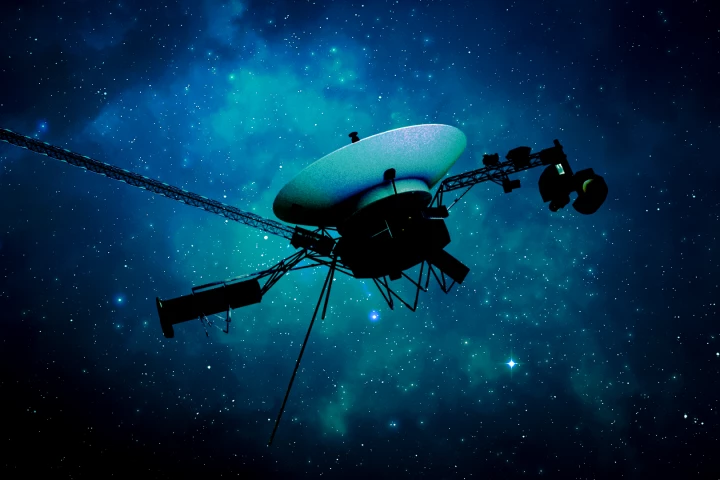Mission
-
We have to cut the 47-year-old space veteran some slack – it's faring much better than our 2019 laptops – but Voyager 1's five months of communicating nonsense to Earth may be over, thanks to Mission Control's 15-billion-mile remote IT fix.
-
NASA’s asteroid-exploring spacecraft Lucy has made its first up-close observations – and discovered something unexpected. The asteroid Dinkinesh not only has a small satellite orbiting it, but that mini-moon is made up of two objects stuck together.
-
After an initial disappointment, Jeff Bezos is back in the Moon business. NASA selected Blue Origin's Blue Moon crewed lander for the space agency's Artemis V mission to the lunar South Pole in 2029 under a firm-fixed price contract of (US)$3.4 billion.
-
NASA has opened the doors to the restored Mission Control Center (MCC) from which Apollo-era flight controllers guided astronauts on the first bold voyages to the Moon. The agency has also released a time-lapse video showing the multimillion-dollar project unfold.
-
NASA'S MErcury Surface, Space ENvironment, GEochemistry and Ranging (MESSENGER) spacecraft has ended its phenomenally successful mission by smashing into the surface of Mercury at speeds of over 8,700 miles per hour
-
Another celestial body has been added to NASA's bucket list as the space agency officially asks the US Congress for US$30 million for the first mission aimed at exploring Jupiter’s moon Europa.
-
For decades, landing on Mars has captivated the imagination of earthlings as the obvious next step in space exploration after landing on the moon, but NASA is also looking into ways to send a manned mission to a more forbidding neighbor – Venus.
-
As Philae begins its long sleep, mankind's attention shifts back to the Rosetta spacecraft as she begins the next phase of her mission. Over the course of the next year, Rosetta will become the first spacecraft to orbit and observe a comet as it approaches the Sun.
-
An unmanned resupply mission to the International Space Station has suffered a catastrophic failure six seconds after launch from the Wallops Island launch facility, Virginia. All personnel have been accounted for with zero injuries, however damage was sustained to the launch site.
-
Following an exhaustive scientific analysis, mission operators at the ESA have confirmed Site J as the primary landing location for Rosetta's Philae lander. If all goes to plan, Nov. 12 will see the first-ever attempted soft landing of a spacecraft on a comet.
-
NASA has launched a high-altitude sounding rocket to capture ultraviolet starlight using a spectrograph, to determine the composition of interstellar dust clouds and their likelihood of being the future birthplace of new stars.
-
SpaceX’s Dragon CRS-3 mission to the International Space Station (ISS) has once again been delayed. This time the delay is due to the failure of a tracking radar, which meant that the launch could not meet the minimum public safety requirements.
Load More











